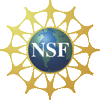
Dataset: GUAM
Taxa: Endocladiaceae
Search Criteria: excluding cultivated/captive occurrences
1
Page 1, records 1-9 of 9
1
Page 1, records 1-9 of 9
Google Map
Google Maps is a web mapping service provided by Google that features a map that users can pan (by dragging the mouse) and zoom (by using the mouse wheel). Collection points are displayed as colored markers that when clicked on, displays the full information for that collection. When multiple species are queried (separated by semi-colons), different colored markers denote each individual species.
Google Earth (KML)

Development of the Consortium of Pacific Herbaria and several of the specimen databases have been
supported by National Science Foundation Grants (BRC 1057303,
ADBC 1304924
and ADBC1115116).
Data Usage Policy. Continued support provided by the Symbiota Support Hub, a domain of iDigBio (NSF Award #2027654).
Copyright 2015 University of Hawai‘i.